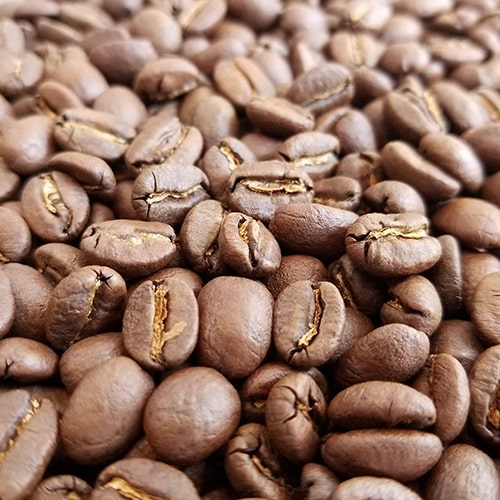Analyzing Coffee Acidity and Body: Understanding the Key Components of Flavor

Affiliate Disclosure: As an Amazon Associate, I earn from qualifying purchases. This post may also contain other affiliate links, meaning I may earn a small commission if you buy through them, at no extra cost to you. Your support helps keep this site running and allows me to continue sharing great content. Thank you!
When you take that first sip of your favorite coffee, two important factors shape the entire experience: acidity and body. Think of acidity as the spark that gives your coffee its brightness, while body is what brings richness and texture to the brew. Once you understand how these elements work, every cup you enjoy becomes more than just a drink—it’s an opportunity to savor coffee on a whole new level.
Many people associate acidity with sourness or bitterness, but in coffee, it represents liveliness, often with fruity or citrus notes. Meanwhile, coffee body ranges from light and silky to rich and syrupy, adding complexity to each sip. Whether you’re a casual drinker or a budding enthusiast, grasping coffee acidity and body is essential to enhancing your coffee-tasting journey.
Did you know that coffee contains over 800 aromatic compounds? These compounds interact with acidity and body to create a rich flavor profile. As you explore different brewing methods, roasts, and origins, you’ll notice how acidity and body can enhance or balance certain flavors, allowing you to choose the perfect coffee for your preferences.
Now that we understand how acidity influences your coffee’s brightness, let’s explore another crucial element, body, and how it contributes to the texture and mouthfeel of your cup.
Understanding Coffee Acidity
When it comes to coffee, acidity doesn’t mean sourness; it refers to the brightness or liveliness that dances on your palate. Acidity brings coffee to life, offering a refreshing, crisp character, much like the zing you get from citrus fruits. Coffees with high acidity often have a clean, vibrant taste that makes them stand out.
Different acids contribute to this effect, and their development is heavily influenced by altitude. At higher altitudes, the cooler temperatures cause coffee cherries to ripen more slowly. This slower maturation process allows more complex sugars and acids to develop, resulting in coffees with brighter, more pronounced acidity. This is why high-altitude regions such as Ethiopia and Kenya are known for producing coffee with distinct citrus, apple-like, or winey notes.
Different acids contribute to this effect, each adding its own unique flavor characteristics to the coffee. These acids develop based on factors like the coffee’s altitude and the climate where it’s grown. Let’s explore some of the most prominent acids that influence coffee’s flavor profile:
Citric acid
Citric acid is responsible for lemon or orange notes, which are prominent in beans from high-altitude regions, especially in Ethiopia and Kenya. The slow ripening process in these regions enhances the development of this acid, giving the beans their characteristic brightness. Ethiopian Yirgacheffe often exhibits bright lemon or lime characteristics, while Kenyan coffees are famous for their bold, blackcurrant-like acidity.
Malic acid
Malic acid gives a tart, apple-like flavor and is commonly found in coffees grown at high altitudes in Central America. Costa Rican beans, in particular, frequently have green apple notes, providing a crisp, refreshing brightness. The higher altitude allows the cherries to develop more slowly, creating a well-balanced acidity.
What’s particularly interesting about malic acid is how its brightness can evolve over time, especially as the coffee cools. Initially, it starts with a sharp, lively brightness, but as the temperature drops, the malic acid softens, resulting in a smoother, more rounded finish. This transformation is why coffees rich in malic acid, such as those from Costa Rica, are often enjoyed across a range of temperatures, providing a coffee experience that shifts from lively to mellow with each sip.
Tartaric acid
Tartaric acid is known for its grape-like, winey flavors and is more prominent in coffees from regions with both high altitude and natural processing methods, such as Ethiopia’s Sidamo region. These grape-like flavors bring a wine-like complexity to the cup, which is especially desirable in natural-processed coffees.
Phosphoric acid
Found in coffees grown in volcanic soils, such as those from Guatemala and Costa Rica, phosphoric acid contributes to a bright, sparkling acidity. The unique soil conditions in these high-altitude regions allow for the slow development of this acid, giving the coffee a lively, effervescent quality that stands out in specialty coffee circles.
Acidity Levels and How They Vary by Region
Acidity levels can vary significantly depending on the coffee’s altitude, origin, and processing methods. Coffees grown at higher altitudes, like those from Ethiopia or Kenya, develop more pronounced acidity due to the slower maturation of the coffee cherries in cooler temperatures. This results in a more complex flavor profile, with a crisp, vibrant acidity that is highly sought after in specialty coffee circles.
On the other hand, coffees grown at lower altitudes, such as those from Brazil or Sumatra, tend to have lower acidity. The warmer climates and faster growth cycle result in beans with muted acidity, often leading to nutty or chocolatey flavors. These coffees offer a smoother, more mellow experience, appealing to those who prefer less brightness in their brew.
Processing Methods and Their Impact on Acidity
The way coffee is processed has a significant impact on its acidity, but altitude also plays a crucial role in how these processes affect the final cup profile. The combination of altitude and processing method can bring out unique characteristics in coffee acidity.
- Naturally processed coffees: In this method, the coffee cherry is dried with the fruit still attached to the bean, which tends to bring out more fruity and intense acidity. When paired with high-altitude regions, where coffee cherries ripen more slowly due to cooler temperatures, the result is often a complex, winey acidity with fruit-forward notes. For example, Ethiopian natural coffees from high altitudes often exhibit bold, bright acidity with flavors reminiscent of berries or tropical fruits. The slow ripening at high altitudes helps develop these pronounced, vibrant flavors.
- Washed (wet) processed coffees: Washed coffees have the fruit removed from the bean before drying, which results in a cleaner, more refined acidity. At higher altitudes, this method brings out an even more delicate and crisp acidity, as seen in Colombian or Guatemalan-washed coffees. In contrast, washed coffees grown at lower altitudes, such as in Brazil, tend to have muted acidity with more nutty or chocolatey flavors, as the warmer temperatures speed up the growth process, reducing the development of complex acids.
By understanding how both altitude and processing influence acidity, you can better appreciate the differences between a naturally processed high-altitude Ethiopian coffee, bursting with fruity acidity, and a low-altitude washed Brazilian coffee, which offers a smoother, more mellow cup.
By recognizing these different acids and their effects, you can better understand the wide spectrum of flavors that acidity brings to coffee. Whether you’re seeking the bright, lemony zing of a Kenyan coffee or the mellow, apple-like acidity of a Costa Rican bean, knowing how acidity varies will allow you to make more informed choices based on your taste preferences.

High Acidity

High Acidity

Low Acidity

Low Acidity
While acidity brings brightness and liveliness to your coffee, body gives it depth and texture, creating a complete and satisfying experience. Together, these two elements balance each other, where lively flavors meet rich, full mouthfeel. As we explore coffee body, you’ll see how these components interact to shape the overall sensation of your coffee.
Defining Coffee Body: From Delicate to Bold
Body refers to the texture or weight of the coffee on your palate. Think of the difference between sipping skim milk and heavy cream, the coffee body can range from light and delicate to rich and full. This quality impacts how satisfying or indulgent your cup feels.
- Light-bodied coffees have a delicate, tea-like texture, perfect for a refreshing, easy-to-drink experience.
- Medium-bodied coffees offer a balanced mouthfeel, providing richness without being too heavy.
- Full-bodied coffees coat your palate with a syrupy texture that lingers, creating a bold, intense experience.
Body also interacts with flavor. Light-bodied coffees bring out bright, fruity acidity, while fuller-bodied brews enhance richer flavors like chocolate or nuts. For example, a light-bodied Ethiopian coffee might feel crisp and clean, while a full-bodied Sumatra can provide a bold, almost chewy mouthfeel.



While body defines the texture and richness of your coffee, it’s the roasting process that unlocks the true balance between acidity and body, shaping the overall flavor experience. Let’s break down how roasting levels shape these key flavor components.
The Role of Roasting: How Light, Medium, and Dark Roasts Impact Flavor
Roasting is a transformative process that unlocks the full potential of your coffee beans. It’s during roasting that acidity and body are shaped. As the green beans are heated, their chemical composition changes, creating distinct flavor profiles at each roast level.
- Light Roasts: These preserve the bean’s natural acidity, the bright, lively flavors that come from the acids already present in the beans. This produces crisp, refreshing flavors, often with fruity or floral notes. If you enjoy a vibrant, light cup, try coffees like Ethiopian Yirgacheffe or Costa Rican varieties.
- Medium Roasts: This roast level strikes a balance, mellowing the acidity while developing a fuller body. The result is a smooth, well-rounded cup with both brightness and richness. Central American coffees, such as Guatemalan or Colombian, often shine at this roast level.
- Dark Roasts: Roasted for longer, dark roasts bring out bolder flavors with reduced acidity and a full body. These beans often have rich, chocolatey, or smoky undertones, making dark roasts from regions like Sumatra an excellent choice for those who prefer a more intense flavor.
Practical Tips for Roast Selection
- Light Roasts: Perfect for bright, tangy flavors and a lighter mouthfeel, best enjoyed black to appreciate the delicate acidity.
- Medium Roasts: Great for a balanced experience with both body and acidity, smooth and satisfying.
- Dark Roasts: Ideal for bold, robust flavors with a fuller body, perfect for espresso or pairing with desserts.
Here’s a quick overview of roast levels and how they impact flavor:
| Roast Level | Acidity | Body | Flavor Notes |
| Light | High | Light | Fruity, Floral |
| Medium | Balanced | Medium | Caramel, Nutty |
| Dark | Low | Full | Chocolate, Smoky |
Curious about how roasting transforms the flavor of your coffee? Watch the video below to see how coffee beans evolve from light to dark roast and discover how each stage influences acidity and body.
Roasting sets the foundation for your coffee’s flavor, but brewing is where the magic happens. The method you choose can either enhance or balance the acidity and body that the roast level has developed.
Let’s explore how different brewing methods influence the final cup and how you can tailor your brew to highlight the flavors you love most.
Brewing Methods: How They Highlight Acidity and Body
Brewing is where all your coffee’s potential comes to life. Each brewing method influences how acidity and body are expressed in your cup.
- Pour-Over: This method is great for enhancing acidity, thanks to the slow, controlled pour. Expect bright, lively notes with a lighter body, perfect for those who enjoy a clean, crisp cup.
- Espresso: With its high-pressure extraction, espresso emphasizes body. The result is a concentrated shot with a creamy texture and balanced acidity, ideal for a bold, intense coffee experience.
- French Press: The full immersion technique of a French press highlights the body by retaining oils and fine particles. This method results in a heavy, rich brew with lower acidity, ideal for those who love a hearty, full-bodied cup.
Practical Tips for Brewing Based on Preferences
- Pour-Over: Best with a light roast to bring out bright, fruity notes.
- Espresso: Use a medium roast for a balanced cup with body and acidity.
- French Press: Opt for a dark roast to enjoy a rich, full-bodied coffee with less acidity.
Here’s a breakdown of how different brewing methods impact acidity and body:
| Brewing Method | Grind Size | Acidity | Body |
| Pour-Over | Medium-Fine | High | Light |
| Espresso | Very Fine | Balanced | Full |
| French Press | Coarse | Low | Full |


Selecting Coffee Based on Preferences
With a brewing method chosen, the next step is selecting the right coffee beans to match your taste. Your beans play a pivotal role in shaping your final cup.
- For Bright, High-Acidity Coffees: Opt for beans from high-altitude regions like Ethiopia or Kenya. Light to medium roasts will highlight their fruit-forward, vibrant notes.
- For Balanced Acidity and Body: Coffees from Central America, such as Guatemala or Costa Rica, provide a pleasant mix of acidity and body, perfect with a medium roast.
- For Full-Bodied, Low-Acidity Coffees: Look for beans from Brazil or Sumatra, where dark roasts enhance the body and deliver a bold, robust flavor.
Here’s a summary to help visualize the relationship between origin, acidity, and body:
| Coffee Region | Acidity | Body | Flavor Notes |
| Ethiopia, Kenya | High | Light | Fruity, Floral |
| Guatemala, Costa Rica | Medium | Medium | Balanced, Citrus, Nutty |
| Brazil, Sumatra | Low | Full | Earthy, Chocolate, Nutty |
Practical Tips for Selecting Coffee:
High-Acidity Fans: Choose beans from high-altitude regions and opt for a lighter roast to enhance natural acidity.
For a Balanced Cup: Central American beans roasted to a medium level offer the perfect mix of acidity and body.
Bold Flavor Seekers: Pick darker roasts from Brazil or Sumatra for a richer, fuller-bodied coffee experience with low acidity.
Enhancing Your Coffee Experience
Understanding acidity and body opens up a world of flavors, transforming your daily cup into a rich sensory experience. These two elements work hand-in-hand to create the overall profile of your coffee. Acidity brings brightness and liveliness, offering crisp, fruity, or citrus notes that dance on your palate. Body, on the other hand, provides texture and richness, from light and delicate to bold and syrupy, giving your coffee depth and satisfaction.
When combined, acidity and body balance each other, allowing you to savor the full complexity of flavors—from the crisp brightness of a light-bodied Ethiopian brew to the rich, full-bodied indulgence of a Sumatran dark roast. You can find what suits your palate best by experimenting with different beans, roast levels, and brewing methods, turning each cup into a new and exciting journey.
Remember, coffee is versatile and endlessly customizable, making each cup a new adventure waiting to unfold. Whether you’re captivated by the bright acidity of Ethiopian coffee or savoring the rich texture of a Brazilian, each sip allows you to explore, refine, and enjoy your unique coffee experience.
Which coffee origin or roast level have you tried recently? How did its acidity or body influence your experience? Share your thoughts or ask questions in the comments below. We’d love to hear from you and help you discover the endless possibilities of coffee flavors.

I help coffee lovers experience the rich stories, origins, and luxury of high-end coffee. At Aroma Expeditions, I share my passion for sustainable sourcing, ethical beans, and the art behind every pour.
Let’s turn your daily brew into an adventure worth savoring.
Hello Sonia,
It’s evident that you have a deep understanding and passion for the intricacies of coffee flavors, influenced by factors like altitude, origin, processing methods, and roasting levels, and how these elements affect the coffee’s brightness, liveliness, and mouthfeel.
Coffee enthusiasts can enhance their tasting experience with your guide.
All the Best,
Eric
I appreciate your thoughtful reflection! Coffee’s journey from farm to cup is filled with so many factors, each one adding to its complex character. Whether it’s the altitude giving a coffee its brightness or the roasting level refining its body, every detail plays a role in crafting that perfect cup. I’m thrilled the guide resonates with fellow coffee enthusiasts like you.
Feel free to share if you’ve discovered any exciting origins or processes that enhance your coffee experience. I’d love to hear what’s in your cup these days!
Wow, I am so impressed—finally, someone who truly understands coffee. I have a house in Guatemala and am currently on holiday in Colombia, staying at a coffee finca in the heart of the Quindío district. As you can imagine, good organic coffee is essential to my life.
In the Guatemalan highlands, most coffee is sun-dried before processing. Every home in November and January has bright red coffee beans drying on tarps. It’s ideal for the region because coffee is harvested in the dry season. In the local Mayan language, Guatemala means “eternal spring,” so there’s plenty of sun to dry the coffee.
Interestingly, they test water content by both feel and sound. They grab a handful and shake it until they hear the optimal hollow sound. This refers to home coffee processing. The beans are manually hulled to remove the dried fruit skin, pulp, and parchment, revealing the coffee bean inside. They then roast them outside, often in Mayan outdoor kitchens where wood fires are used. This method produces a lot of smoke.
Pardon me for wandering down memory lane, but your article on coffee acidity inspired me!
Your experience in Guatemala truly highlights how much local tradition plays a role in shaping coffee. The sun-drying process and wood-fired roasting must add layers of complexity to the flavor, especially with the smokiness from the outdoor kitchens. That hollow sound test for moisture is an incredible example of hands-on expertise!
Traditional methods like these often result in brighter acidity and nuanced flavors, reflecting the care and attention to detail. It’s no wonder that Guatemalan coffee is renowned for its balance of acidity and body, and your firsthand experience really brings that to life. How do you find the acidity compares with the coffees you’re sampling in Colombia?